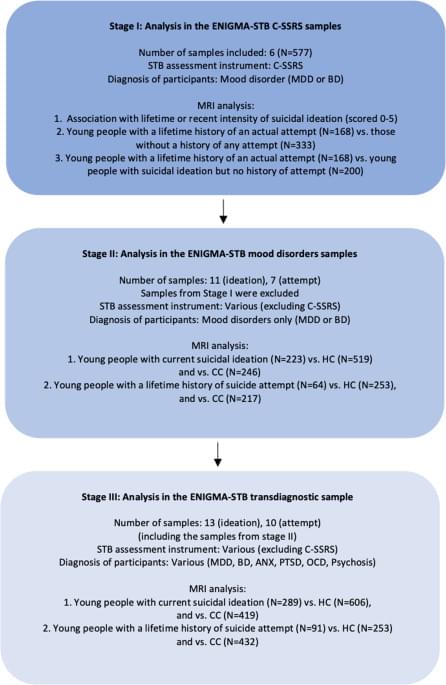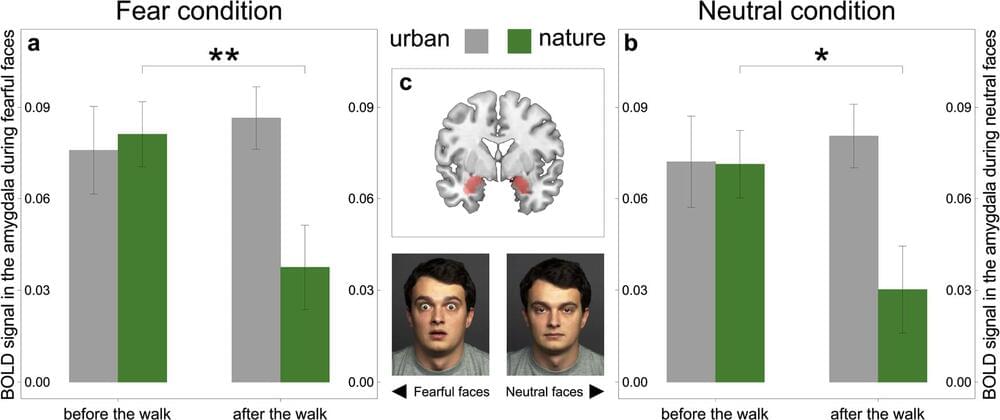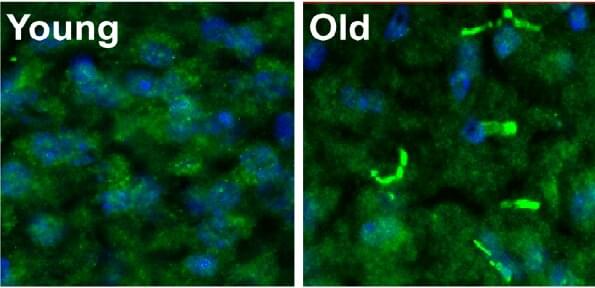Page 3410
Sep 8, 2022
3D-printed Martian rock and titanium alloy could be used on Mars to make rocket parts
Posted by Genevieve Klien in categories: 3D printing, space

GooKingSword/Pixabay.
Pretty interesting, right? But it could be possible one day with 3D printing technology.
Sep 8, 2022
A newly discovered planet 40% larger than Earth may be suitable for life
Posted by Genevieve Klien in category: alien life
It’s one of two new planets that were recently found about 100 light years from Earth, both of which take just days to orbit their own sun.
Sep 8, 2022
This just-discovered super-Earth may be our next best chance of finding aliens
Posted by Atanas Atanasov in category: space
Funny name, and serious astronomy.
Its discoverers say the new super-Earth could be second only to the TRAPPIST-1 planets as a potentially habitable alien world.
Sep 8, 2022
How explainable artificial intelligence can propel the growth of industry 4.0
Posted by Shubham Ghosh Roy in categories: information science, internet, robotics/AI
The very first industrial revolution historically kicked off with the introduction of steam-and water-powered technology. We have come a long way since then, with the current fourth industrial revolution, or Industry 4.0, being focused on utilizing new technology to boost industrial efficiency.
Some of these technologies include the internet of things (IoT), cloud computing, cyber-physical systems, and artificial intelligence (AI). AI is the key driver of Industry 4.0, automating intelligent machines to self-monitor, interpret, diagnose, and analyze all by themselves. AI methods, such as machine learning (ML), deep learning (DL), natural language processing (NLP), and computer vision (CV), help industries forecast their maintenance needs and cut down on downtime.
However, to ensure the smooth, stable deployment and integration of AI-based systems, the actions and results of these systems must be made comprehensible, or, in other words, “explainable” to experts. In this regard, explainable AI (XAI) focuses on developing algorithms that produce human-understandable results made by AI-based systems. Thus, XAI deployment is useful in Industry 4.0.
Sep 8, 2022
Chiral quasi bound states in the continuum for a high-purity circularly polarized light source
Posted by Shubham Ghosh Roy in categories: energy, quantum physics, space
An ultracompact circularly polarized light source is a crucial component for the applications of classical and quantum optics information processing. The development of this field relies on the advances of two fields: quantum materials and chiral optical cavities. Conventional approaches for circularly polarized photoluminescence suffer from incoherent broadband emission, limited DOP, and large radiating angles. Their practical applications are constrained by low efficiency and energy waste to undesired handedness and emission directions. The chiral microlasers can have large DOPs and directional output, but only in specific power ranges. Most importantly, their subthreshold performances plummet significantly. Up to now, the strategy for simultaneous control of chiral spontaneous emission and chiral lasing is still absent.
In a new paper published in Science, researchers from Harbin Institute of Technology and Australian National University employ the physics of chiral quasi bound states in the continuum (BICs) and demonstrate the efficient and controllable emission of circularly polarized light from resonant metasurfaces.
BICs with integer topological charge in momentum space and a theoretically infinite Q factor have been explored for many applications including nonlinear optics and lasing. By introducing in-plane asymmetry, BICs turn to be quasi-BICs with finite but still high Q factors. Interestingly, the integer topological charge of BICs mode would split into two half integer charges, which symmetrically distribute in momentum space and correspond to left-and right-handed circular polarization states, also known as C points.
Sep 8, 2022
Structural brain alterations associated with suicidal thoughts and behaviors in young people: results from 21 international studies from the ENIGMA Suicidal Thoughts and Behaviours consortium
Posted by Saúl Morales Rodriguéz in categories: biotech/medical, neuroscience
Suicide is the second leading cause of death for young people aged between 15 and 29 [1]. Suicidal thoughts and behaviors (STBs) typically emerge during adolescence [2]. It has been estimated that between 11 and 29% of adolescents report suicidal ideation (suicidal thoughts), and 2–10% of adolescents attempted suicide in the past year [3]. Unfortunately, the number of suicide attempts among children and adolescents has continued to increase sharply despite national and international prevention efforts [4].
To improve targeting of prevention and intervention efforts and thereby reduce the number of deaths by suicide in this age group, we must increase our understanding of the mechanisms underlying both suicidal thoughts and suicidal behaviors (including suicide attempts) in young people. Neuroimaging, including Magnetic Resonance Imaging (MRI), is a useful tool with which to identify biological risk markers for STBs in vivo and non-invasively. Many neuroimaging studies have been published examining the neural substrates of STBs in the past 20 years, but few have focused on STBs in youth (for a review, see [5]). Although several of these studies support lower regional brain volumes, particularly in ventral and dorsal prefrontal and also in temporal regions [6,7,8,9] in suicide attempters with mood disorders, negative findings have also been reported [10, 11].
Sep 8, 2022
How does nature nurture the brain?
Posted by Saúl Morales Rodriguéz in category: neuroscience
After a 60-minute walk in nature, activity in brain regions involved in stress processing decreases. This is the finding of a recent study by the Lise Meitner Group for Environmental Neuroscience at the Max Planck Institute for Human Development, published in Molecular Psychiatry.
Living in a city is a well-known risk factor for developing a mental disorder, while living close to nature is largely beneficial for mental health and the brain. A central brain region involved in stress processing, the amygdala, has been shown to be less activated during stress in people who live in rural areas, compared to those who live in cities, hinting at the potential benefits of nature. “But so far the hen-and-egg problem could not be disentangled, namely whether nature actually caused the effects in the brain or whether the particular individuals chose to live in rural or urban regions,” says Sonja Sudimac, predoctoral fellow in the Lise Meitner Group for Environmental Neuroscience and lead author of the study.
To achieve causal evidence, the researchers from the Lise Meitner Group for Environmental Neuroscience examined brain activity in regions involved in stress processing in 63 healthy volunteers before and after a one-hour walk in Grunewald forest or a shopping street with traffic in Berlin using functional magnetic resonance imaging (fMRI). The results of the study revealed that activity in the amygdala decreased after the walk in nature, suggesting that nature elicits beneficial effects on brain regions related to stress.
Sep 8, 2022
New study identifies how memory of personal interactions declines with age
Posted by Saúl Morales Rodriguéz in categories: biotech/medical, life extension, neuroscience
One of the most upsetting aspects of age-related memory decline is not being able to remember the face that accompanies the name of a person you just talked with hours earlier. While researchers don’t understand why this dysfunction occurs, a new study conducted at University of Maryland School of Medicine (UMSOM) has provided some important new clues. The study was published on September 8 in Aging Cell.
Using aging mice, researchers have identified a new mechanism in neurons that causes memories associated with these social interactions to decline with age. In addition, they were able to reverse this memory loss in the lab.
The researchers report that their findings identified a specific target in the brain that may one day be used to develop therapies that could prevent or reverse memory loss due to typical aging. Aging memory problems are distinct from those caused by diseases like Alzheimer’s or dementia. At this time, there are no medications that can prevent or reverse cognitive decline due to typical aging.
Sep 8, 2022
AI researchers improve method for removing gender bias in machines built to understand and respond to text or voice data
Posted by Saúl Morales Rodriguéz in category: robotics/AI
Researchers have found a better way to reduce gender bias in natural language processing models while preserving vital information about the meanings of words, according to a recent study that could be a key step toward addressing the issue of human biases creeping into artificial intelligence.
While a computer itself is an unbiased machine, much of the data and programming that flows through computers is generated by humans. This can be a problem when conscious or unconscious human biases end up being reflected in the text samples AI models use to analyze and “understand” language.
Computers aren’t immediately able to understand text, explains Lei Ding, first author on the study and graduate student in the Department of Mathematical and Statistical Sciences. They need words to be converted into a set of numbers to understand them—a process called word embedding.

















